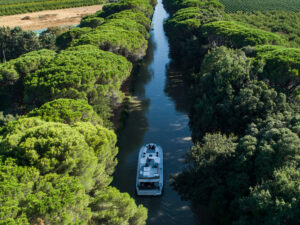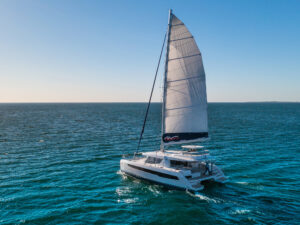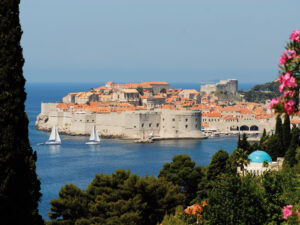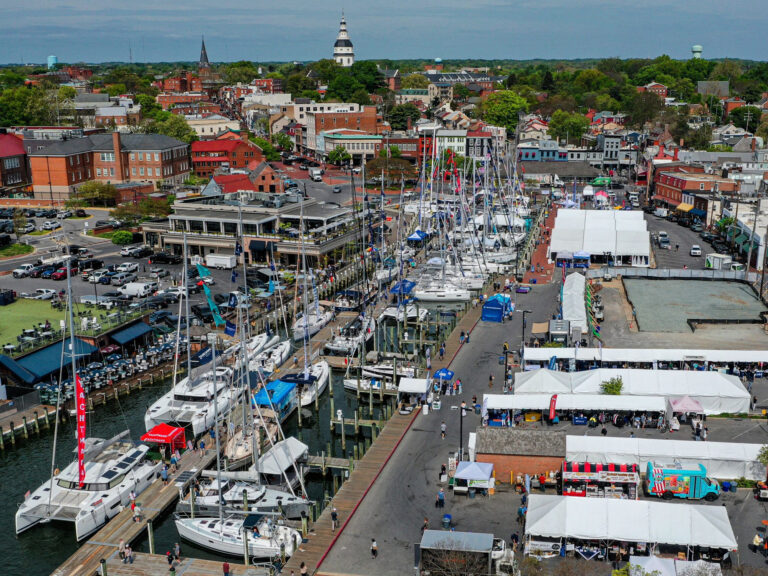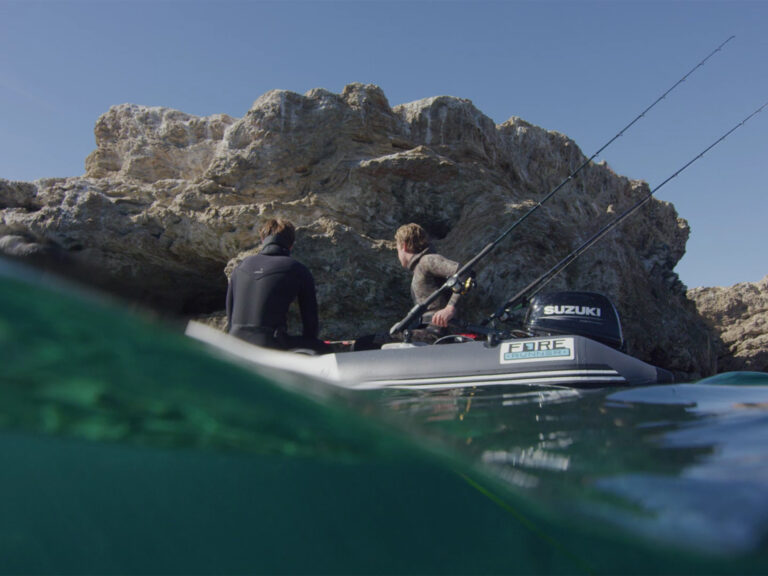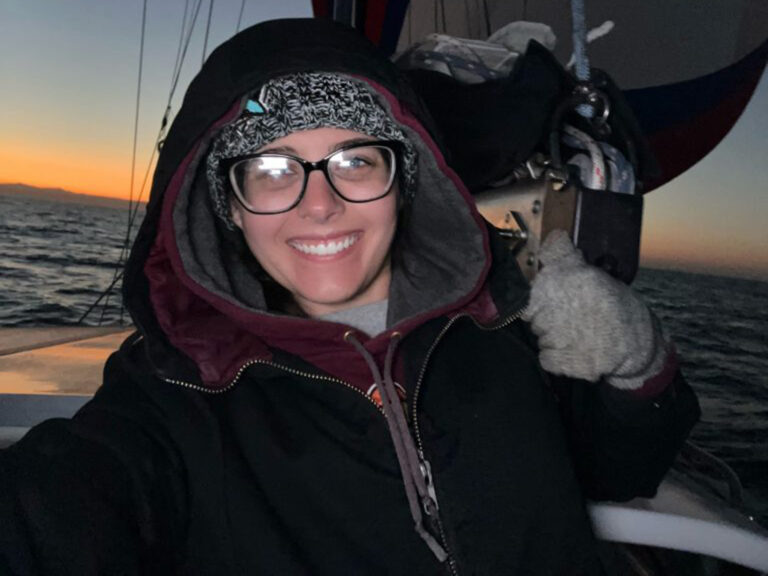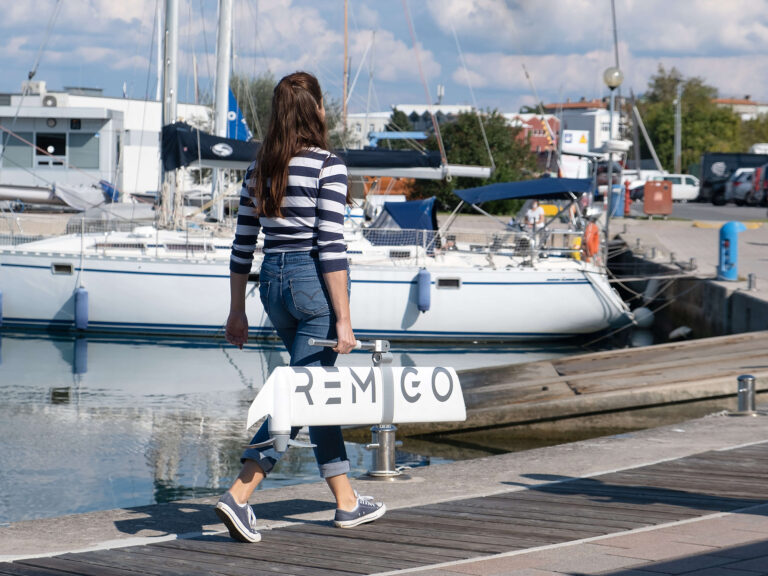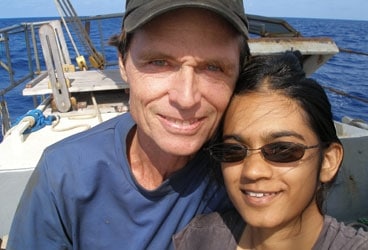
stowe 368
Think about it: two straight weeks at sea. It’s not an insignificant amount of time, but most of us could handle it, and even enjoy it. So let’s up the ante: two straight months at sea. Hmmm. Pushing it, no? But what about two straight years at sea? Honestly, stop and think about it.
Food. Communications. Spares. Navigation. What if this went wrong or that broke? Ouch! What if we got hurt?
No new movies, books, music, or magazines. No ripe fruit, no fresh veggies. No family, friends, or nights out. No walks ashore, no drives to town, no long conversations, no moonlight kisses. Heck, not a single lovely evening anchored in a quiet cove: just the sea and the stars, the calms and the storms, the open ocean, the endless blue, you and your boat. Two. Long. Years.
We can all agree on this, right? Nada. No thanks. No way, Jose.
Unless, of course, you’re the voyager, explorer, boatbuilder, spiritualist, dreamer, sculptor, musician, father, and sometimes extremely controversial ex-convict named Reid Stowe. Two years? Ha! In his current, ongoing quest to spend 1,000 (or more?) successive days at sea, on April 21 of this year Reid put two straight years, or 730 consecutive days, behind him. Now, after well over a couple of years under way-and counting-and a full spin around the planet, things are really starting to get good. In fact, by Reid’s measure, they’re just about perfect.
How do I know this? Why, I called him up!
Reid answers his satellite phone after one ring, and when he’s asked for a status report, the answer spills forth like a wave breaking on a beach.
“I don’t know if you’ve seen my track on my website”-www.1000days.net-“but I just recently finished drawing a 2,600-mile heart in the ocean,” he says, referring to his latest waterborne creation. Part navigator, part performance artist, Reid has a history of combining the two disciplines to render grand patterns with his wake, or GPS tracks at least, likening them to the constellations in the sky, but even better defined.
“It comes up,” he adds, “very clear.”
Later, I’ll go check out his recent course track. Yep, there it is: The connected dots of his route over the last several weeks form a plump, round heart.
As to his wherabouts, he continues: “That left me on the west side of the South Atlantic. I’m now almost up to the equator. I can see the Southern Cross. I’ve just sailed through the biggest school of tuna I’ve ever seen in my life. When I finish this call, I’m going to have another look at their bioluminescent bodies, swimming behind the schooner. So it’s a beautiful night, I’m feeling good and strong, and things are looking real good.”
Two years? Reid Stowe, now well into this third, laughs at your two short years.
Can You Relate?
A relatively short magazine profile can’t do justice to the exuberant, eccentric life and times of the one-and-only William Reid Stowe, who set forth upon this celestial orb and began his epic stab at human existence on January 6, 1952. Fit, lean, and handsome at 57, Reid looks a good decade younger-or at least he did the last time anyone laid eyes on him-which is a remarkable feat considering the never-ending adventures he’s packed into his earthly travels thus far.
Reid is the eldest of six kids; his father was an Air Force pilot who kept the family moving throughout his son’s formative years. It’s almost too easy to surmise that the path Reid ultimately chose, one diametrically opposed to the strident regulation of a military career (even though he credits his dad for teaching him the virtues of routine, regimentation, and hard work; the core values of a diligent seaman), was in some ways an act of rebellion (though he also makes it very clear that the unconditional support of his parents has been instrumental in
his endeavors).
Still, Reid, who came of age as a young artist in the Age of Aquarius studying Buddhism and other religions and practicing yoga and meditation-in short, embracing your classic “alternative lifestyle”-was never destined for the Air Force Academy. Even now, Reid speaks in New Age platitudes, about being “in touch” and “connected” with various people, objects, beliefs, and philosophical doctrines. Once again, it’s almost too easy to reject such discourse as the ramblings of an aging space cadet.
In fact, having known Reid for several years, at times I’ve pled guilty to the above, though I’ve come to realize that his outlooks and views are considered and sincere. Even so, while writing this piece, on numerous occasions I forced myself to recall the straightforward question posed in the Elvis Costello song “What’s So Funny About Peace, Love And Understanding?” Even to dolts like me, the answer is obvious.
The point is, it’s tempting to write off Reid’s earnest penchant to embrace his karma and consciousness. But if you dismiss his hard-earned credentials as a talented and tenacious sailor and mariner (albeit a very unconventional one) who earned his chops building and sailing his very sound but unusual boats over a ton of demanding, difficult miles, you do so at the risk of sounding very foolish yourself.
Into the Blue
Reid Stowe cut his boatbuilding teeth molding fiberglass surfboards at a summer beach house in North Carolina owned by his mother’s family. Later, he built his first real boat there, a 27-foot Wharram-designed catamaran that weighed a mere 1,400-pounds.
Though Reid entered college to study art, he didn’t last long. On a surfing vacation to Hawai’i, he met a young local sailor who invited him to crew on a voyage across the South Pacific, an invitation Reid happily accepted and which gave him his first taste of bluewater sailing. In New Zealand, he made the acquaintance of another youthful cruiser, Dutchman Ivo Van Laake, who’d recently sailed with Bernard Moitessier. Later, Reid met Moitessier personally, and he says that the French sailing legend “had a great influence over me,” though it would be Van Laake who left the more lasting impression.
Stowe returned to North Carolina, and Van Laake soon joined him, and the two crossed the Atlantic on Reid’s 27-foot cat, Tantra. After the double-handed passage to Portugal, Reid soloed to Morocco. Once his Dutch friend returned after a visit home, the two made a second Atlantic crossing, to Brazil, and then sailed into the Amazon River. Finally, having visited four continents, Reid concluded the journey with another solo sail back to North Carolina. In voyaging, he’d found a calling, and he was ready for more. But he needed a boat large enough for his growing ambitions.
Once again, he decided to build it himself. Back on the Carolina beach, with assorted family members and a cadre of free-spirited volunteers, Reid began constructing a 70-foot gaff-rigged schooner based on the old Gloucester fishing boats. The boat was originally called Tantra Schooner-on breaks, the workers enjoyed chanting the words aloud-but Reid later changed the name to Anne, after his mother. The main hull was fashioned using a material called Fer-A-Lite, a two-part micro-balloon/polyester-resin layup over steel mesh; the interior’s elaborate carvings and woodwork took shape in walnut, driftwood, and Caribbean hardwood; the ballast was 42,000 pounds of poured concrete.
With his first wife and his daughter, Reid took off for the Caribbean, then later set sail on his first truly intrepid offshore exploit aboard Anne, a five-month expedition to Antarctica. In subsequent years, he was busted for helping unload a shipment of pot and served nine months in a medium-security penitentiary; was divorced and remarried; sailed to Manhattan, established a base at Pier 63, and became immersed in the Chelsea art and music scene; and with his second wife embarked on several significant sailing trips, including a 200-day, nonstop Atlantic cruise he dubbed “The Voyage of the Sea Turtle” in honor of the turtle-shaped track that Anne “carved” through the seas.
He also kept thinking about a long sea journey of “extreme endurance” that he’d originally envisioned on the voyage to Antarctica, one that was so unique that the only thing he could equate it to was a passage to the heavens. He even had come up with a name for it: “1,000 Days at Sea-The Mars Ocean Odyssey.”
An Eventful Journey
The original idea was to land a major sponsor, and for years Reid searched for one, hoping he’d find a corporate backer who’d understand the value in a “space analogous” expedition that would take as long as a journey to Mars and pose similar psychological challenges. But none ever materialized, and on April 21, 2007, with minor support from a handful of companies and individuals but little hard cash, Reid and his girlfriend, Soanya Ahmad-his second marriage had also ended in divorce-took off anyway.
The trip almost ended before it really even began.
Two weeks after departing from New Jersey, on Day 15, Anne collided with a freighter and lost her bowsprit and headstay, a harrowing incident, Reid says, that Soanya and he were lucky to survive. It took nearly a month to effect adequate repairs, and once completed, Anne resumed a slow course through the South Atlantic toward the Cape of Good Hope and the Roaring 40s.
Blown sails were problematic, but they paled in comparison to Soanya’s chronic seasickness. Ultimately, the couple decided that she’d abandon the voyage and Reid would continue alone, so on Day 306, off Western Australia, Soanya stepped aboard a Royal Perth Yacht Club launch piloted by none other than Aussie sailor Jon Sanders, who holds the record for the longest nonstop solo voyage ever: 657 days. (If Reid reaches 1,000 days, he’ll easily break the singlehanded record set by Sanders, but because Soanya sailed the first 306 days with him, he hasn’t yet.)
As it turned out, Soanya wasn’t only seasick; she was pregnant. Five months later, in July 2008, she gave birth to a boy named Darshen Ahmad Stowe. (Reid has yet to see his son, who’s living with his mother in Queens, New York; he likens the situation to his own childhood, when his dad was deployed overseas for long stretches.)
By that time, the new father had experienced more torn sails off South Australia as well as a busted desalinator, so he decided to sail north across the equator and into the North Pacific to fill his water tanks with rainwater. With that mission accomplished, and now well into his second year under way, he turned back toward Cape Horn to complete his first circumnavigation aboard Anne. In an e-mail message, Reid described what happened next:
“After I filled my water tanks, I decided to sail south back into the trade winds. I let nature dictate my course, continuing with my daily seamanship work as usual. At the bottom of the trade winds, I got a wind shift, and as it was much too early to head to Cape Horn, I followed the wind around and headed back up into warmer weather.
“Around October 2 [2008], I got an e-mail from an old sailing buddy saying, ‘Congratulations, Reid, you’ve drawn a whale with your course.’ I looked at my map, and sure enough, it was a 4,600-nautical-mile whale! This accidental art confirmed to me that I was in tune with the ocean, as my style of sailing created an unbelievable but true spiritual and technical wonder. This gave me the freedom to go deeper into oceanic prayer, and I slowed down and looked around in awe and wonder. My divine spirit swelled with love. This is where I am now, living out my lifelong dream close to the sea and the grace of the universe.”
With that, Reid rounded the Horn and sailed back into the Atlantic, where he passed the two-year milestone on Day 730 and kept right on going.
The Love Voyage
In early August, I sent Reid an e-mail asking the exact date of his 1,000th day and where precisely he planned on concluding his journey in early 2010. A few days later came this reply:
“I still plan on arriving in [New York City, but] not on Day 1,000. It is no longer that to me. Nor is it the Mars Ocean Odyssey. Anyone who has been reading my story closely knows that. It is now The Love Voyage, and I intend for The Love Voyage to go on. And when I do come back, The Love Voyage will continue and keep going and take on new direction and meaning.”
Along the way, Reid has had his detractors, some of whom seem dangerously obsessive. One such critic has gone so far as to build entire websites devoted to Reid’s claims, deeds, and transgressions over the years.
“I’m not a perfect sailor, and they’ve found some flaws,” Reid says of his more vocal denouncers. “They don’t like my lifestyle, my philosophy, my woman, my personality, my boat, and perhaps the fact that I’m following my dreams. But I can’t see how any man who spends any amount of time at sea alone could hate me. At sea, you learn respect; otherwise, you couldn’t do it.”
Here’s how Reid has described his quest: “I’ve come to see that my mission is to inspire the world while using love to adapt to living with the forces of the sea. The human society part of me says, ‘You must go; set a course.’ The divine searcher side of me says, ‘Pray here for a while; this is your place, your moment.’ I’ve always seen my journeys into the wilderness of the sea as a spiritual quest. The winds and seas and wildlife follow me saying, ‘Save us.’ I say, ‘Take me where you will, I’m seaworthy.'”
Meanwhile, he sails on and on. “I’m on the back side of the Atlantic trades,” he wrote in his last e-mail to me, “sailing gently, having new experiences.”
Where and how will this odyssey, this very long journey through space and time, ultimately end? Only Reid knows. Like Kurtz, the rogue ivory trader in Conrad’s Heart of Darkness, he’s ventured to the far side of his soul. But while Kurtz chose to dance with the darkness, Reid has tacked for the opposite shore and is flirting with different obsessions. Alone with his sea, he’s bathing himself in the light.
Herb McCormick is a CW editor at large.

